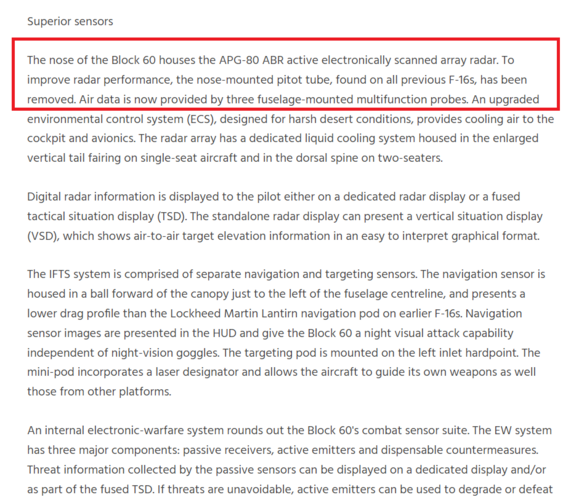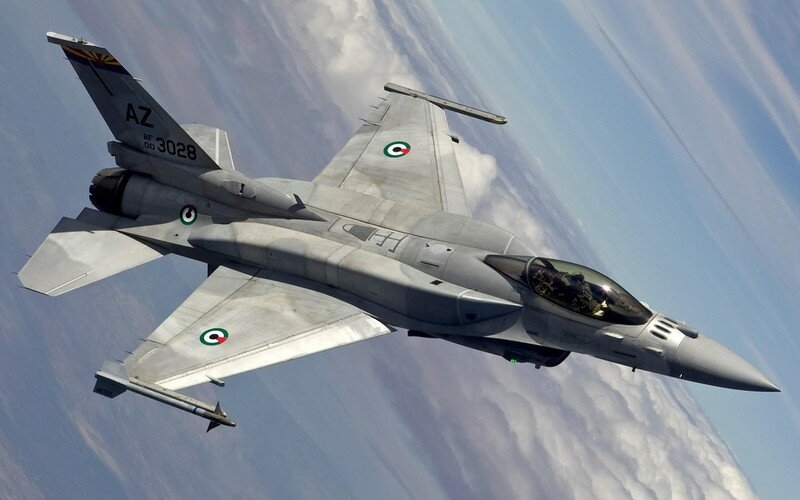Here is an answer from another blog:
"The F-16 radar is not a CW (constant wave) type of radar (like the old F-4 or FB-111 radar systems), but is a pulsed radar system. Instead of constantly broadcasting, and constantly receiving like a CW system, the APG-66 or APG-68 pulsed radar transmits for a very brief period, and then must stop all transmissions to listen for a radar return (like an echo) off of a target. If the radome has been properly designed and characterized, the pitot tube isn't "seen" as a target in front of the radar antenna. In fact, the radar cannot see targets too close to the nose of the aircraft anyway. Not only must the signal bounce back from a target to be seen, but the entire signal sent out must bounce back completely, from start to finish."
"The transmission pulse is indeed a very short burst (nano seconds), but it travels at the speed of light, (186,000 miles per second), and reflects almost as fast. The first part of the transmission, and actually all parts of the transmission are more than just a blast of raw RF (radio frequency) energy, and contain certain characteristics that the source radar will recognize. What's contained in the radar pulse are not common knowledge, and will stay that way here. But if something is too close to the transmitting antenna, the first part of the signal will reflect back while the radar is still transmitting, and not yet in the receive mode. Therefore, the first part of the radar pulse isn't seen by the receiver, and therefore it is not recognized as a good return from a real target."
"Side note: While this transmitting and receiving of the radar is taking place, an electrical signal is sent to one box on the F-16, called the IBU (Interference Blanking Unit). This IBU acts sort of like a signal traffic cop, to allow certain components to transmit, and others to receive, and some to do neither, for a brief period. This keeps each from interfering with the other system, and possibly "blinding" each other with RF energy. Imagine an ECM (electronic countermeasures) pod transmitting a whole lot of power to try and to jam a radar system, while at the same time other on-board sensors are in the receive mode. The sensors would "see" all this power and be blinded. Damage could be done, and systems could be smoked."


